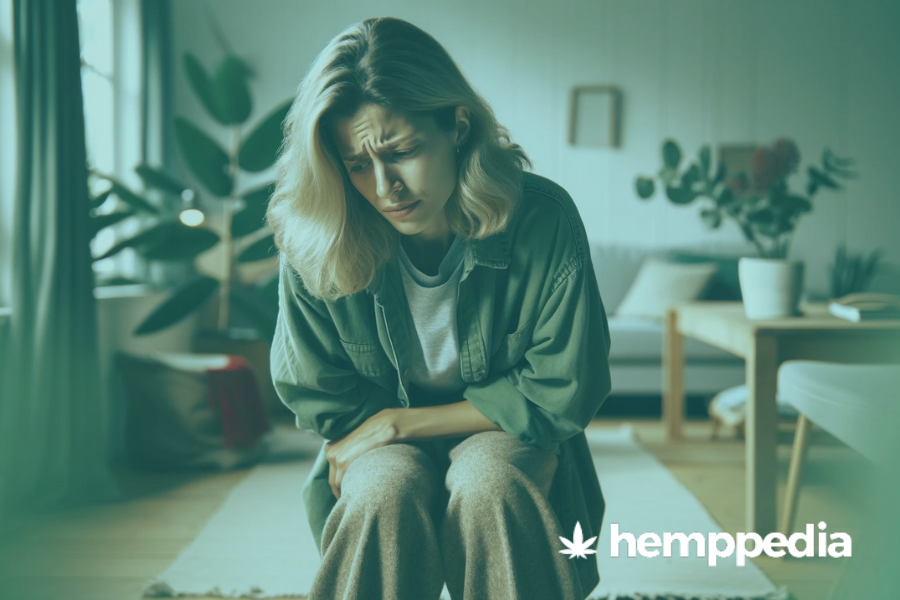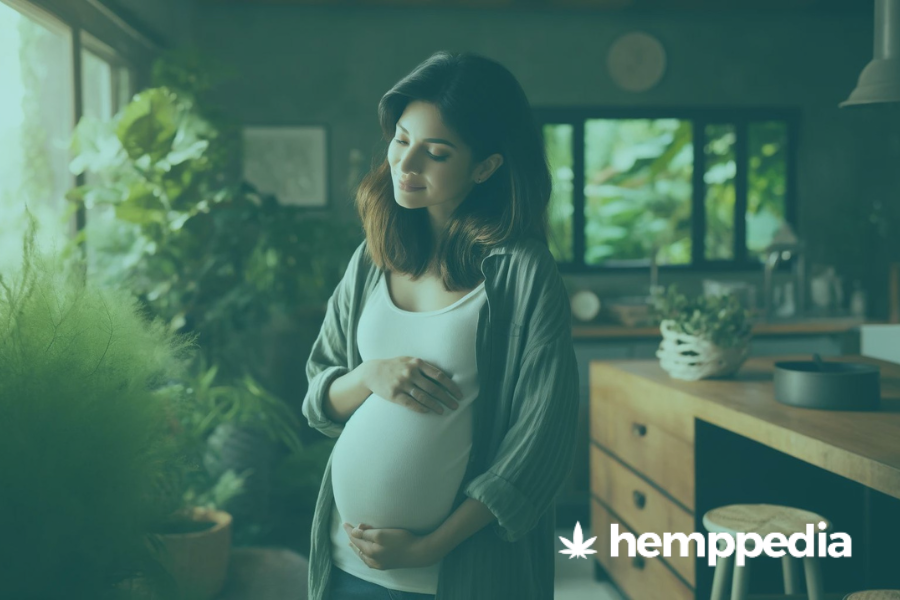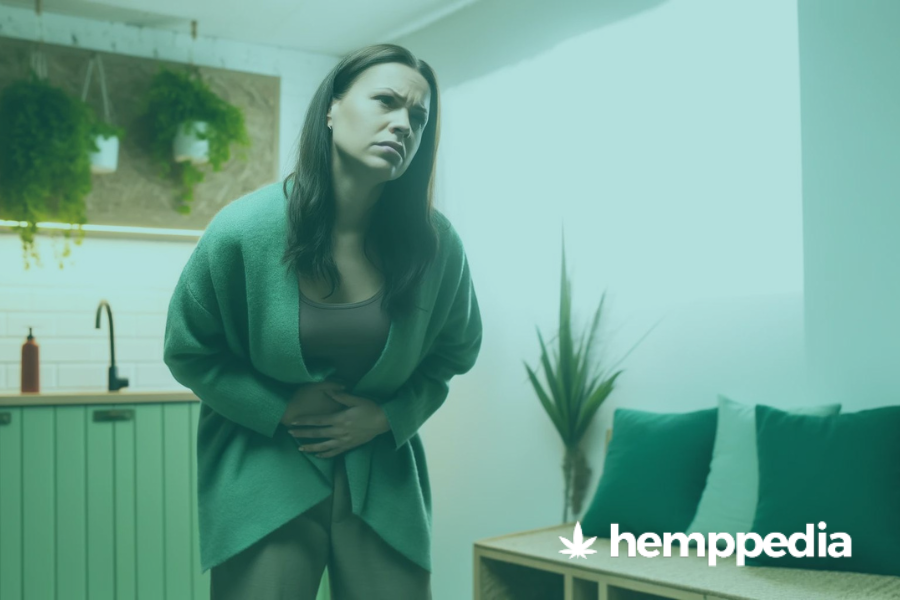We might as well call it the miracle cannabis compound. CBD has been praised by consumers and researchers1 due to its versatile usage when it comes to treating different conditions. Its application is particularly popular on conditions for which a cure or a cause has not yet been discovered, such as endometriosis.
CBD is an acronym for Cannabidiol. It is a compound found in hemp and cannabis that lacks the intoxicating and addictive effects associated with other cannabis compounds such as Tetrahydrocannabinol (THC). Because of this, this, hemp-derived CBD products are legally sold and used in many countries around the world.
The wide application of CBD in the medical context has been studied extensively and by now, there is plenty of medical evidence for the healing properties CBD possesses.
It has strong anti-inflammatory2, and pain-relieving1 properties, as well as the ability to positively influence brain chemistry, thus effectively treating depression3, anxiety4, irritation, and stress.
Therefore CBD and CBD Oil have been used to treat conditions such as:
- Polycystic Ovary Syndrome (PCOS)
- Osteoporosis
- Alzheimer’s Disease
- Autism
- Menopause
- Depression
- Migraines
But what is the relationship between CBD and endometriosis? Is there proof that CBD can effectively aid in endometriosis pain management. Is there another endometriosis pain relief method are not aware of yet?
CBD for Endometriosis – quick overview
Further research indicates that cannabinoids have a direct influence on endometriosis. It has been found that cannabinoids are responsible for the following:
- Stopping cell proliferation
- Preventing cell migration
- Reduce inflammation
- Calm and reduce pain
This article will look into these claims in more detail and hopefully establish a relationship between CBD and endometriosis based on medical research and actual consumer experiences.
What is Endometriosis?
Endometriosis is a condition which only affects women. It is associated with the endometrium tissue – the tissue that lines the uterus – and its unusual growth on the outside of the uterus. Once it starts growing in the “wrong place”, the endometrium tissue can further develop on the fallopian tubes, ovaries, and other abdominal locations. It can sometimes go undiagnosed for a long time, as some of the symptoms can be easily dismissed as just more severe menstrual cramps and discomfort.
Further endometriosis symptoms include:
- Painful intercourse
- Painful urination or bowel movements
- Chronic lower back, abdominal or pelvic pain
- Diarrhea, constipation or nausea
- Infertility or difficulty getting pregnant
However, it is rare that all of the symptoms are present at once, which is why many women can be unaware that they have endometriosis.
This condition is not considered life-threatening and it does not affect women’s life span. Nonetheless, it causes both physical and psychological damage It is highly associated with strong pain and discomfort, as it responds to both the hormones present in a woman’s body and the uterus alone.
Similarly to the menstruation process, endometrial tissues build up every month, followed by a breakdown and a shed. The problem, however, occurs when the tissue material is not properly disposed of by the body. Trapped tissue frequently becomes inflamed and can cause internal scarring while the body tries to absorb back the “unflushed” material.
Every woman is different, therefore the level of discomfort and pain differs significantly, Nonetheless, there have been documented cases of women suffering from endometriosis, whose quality of life has been severely affected by the conditions, causing them to experience increased rates of anxiety and depression5
What Causes Endometriosis?
The exact cause of endometriosis remains unknown. There are, however some theories to what might contribute it its development.
One of the most widely accepted theories comes from the Obstetrics and gynecology journal6 and it suggests that endometriosis occurs due to a phenomenon called “retrograde menstruation”. In simple terms this means that menstrual blood flows backward, carrying endometrial tissue through the fallopian tubes into the peritoneal cavity.
Once the tissue has been transported to the abdominal areas, it acts very similarly to cancer cells, as it grows and multiplies unnoticed by the body’s immune system. As the endometrium develops, it slowly changes its environment to become more hospitable by recruiting blood veins for nutrient supply and creating new nerve endings, which increase pain perception. These later contribute to the severe chronic pain associated with endometriosis. Another endometrium – specific quality is that it can transport to other tissues, thus spreading vastly.
Conventional Endometriosis Treatment
Those who have not yet experienced CBD as endometriosis pain relief may be familiar with conventional endometriosis treatment. This usually includes:
Painkillers
Painkillers usually mask the pain and the anti-inflammatory of the drugs contain the affected area for a while. Frequent use of such painkillers may lead to addiction or increase the likelihood of a heart attack.7
Hormonal Therapy
Hormonal therapy in the form of birth control can be an effective way to reduce Endometriosis symptoms. This method, however, is only suitable for women who are not planning a pregnancy. Other side effects of hormonal therapy have been described as weight gain, depression or irregular vaginal bleeding.
Surgery
Resorting to surgery can be quite costly. Despite a great success rate, in 50% of the cases, the results are only temporary and there have been records of women experiencing the symptoms of endometriosis again, within a year of the surgery8.
Although partially successful, none of these treatments is completely safe or side-effect-free.
Is there a natural endometriosis treatment?
Is CBD a possible endometriosis pain relief?
As already mentioned, CBD has several proven healing properties. In comparison to conventional endometriosis treatments, CBD stands out as a natural and mostly side-effect free alternative.
Supported by medical evidence, CBD can actually have a direct impact on the female reproductive tract9 functionality, due to its close relation to the endocannabinoid system.
CBD can be a powerful aid when treating endometriosis, not only because of its anti-inflammatory10 and pain-relieving qualities but because it has the ability to affect the development of the endometrium tissue in several ways.
Cannabinoids Can Stop Cell Multiplication
A healthy body has several defense mechanisms in the form of immune reactions11, which shield the organism from any foreign substances, microorganisms, and toxins. Apoptosis12 is the body’s way of inducing “programmed” cell death when it noticed damaged cells, which may cause a threat to the overall system. There is however evidence13 that women suffering from endometriosis have impaired apoptosis functions, which allows for the easy spread of the endometrium tissue.
A study 14 shows that CBD has a direct influence on cell survival or death decision, as well as the ability to prevent faulty cells from spreading.
Furthermore, another study15 on mice suggests that cannabinoids represent a promising therapeutic approach when it comes to endometriosis treatment
CBD can Prevent Cell Migration
It has been concluded that cell migration in the body is directly influenced by the CB1 and CB2cannabinoid receptors. Studies show that CBD, as a cannabinoid, has the ability to influence and in some cases even stop can stop endometriotic cells from migrating16, as it also influences the human body to grow more of its own Cannabinoids.
Stopping the cell migration can the only solution for women who have undergone surgery to remove the affected area, but the endometriosis has later returned in a different area.
CBD calms pain nerves and reduces pain
Severe pain in one of the most common symptoms of endometriosis. As already mentioned, prolonged intake of painkillers may have harmful, long term side effects. Therefore, CBD for endometriosis may be a more adequate solution, as it has been proven17 to reduce various types of pain.
How to use CBD oil to treat endometriosis?
As endometriosis affects internal areas of the body, a sublingual use of CBD oil is recommended. This method consists of taking the CBD oil under your tongue and it is done by using a dropper. The sublingual method of taking CBD is the second fastest method after inhalation. The CBD effects can usually be felt after around 30 – 60 minutes. The flavor of CBD is described as hereby and earthy. If taking the oil sublingually is not your preferred method, there are other ways to use CBD.
Related article: How to use CBD
The right dosage of CBD for endometriosis will depend on the severity of your symptoms, as well as how your body reacts to the oil. We recommend using the step-up approach as described in the book CBD: A Patient’s Guide to Medicinal Cannabis by L. Leinow18. North Atlantic Books. CBD can be an adequate endometriosis relief, but you have to listen to your body and determine an effective dosage for your needs.
Related article: CBD dosage guide
Conclusion
Even though not life-threatening, endometriosis can severely impact a woman’s quality of life. All conventional endometriosis currently offered comes with a rather long list of harmful side-effects. CBD could offer a natural treatment for endometriosis, as it works in various ways to not only mast the symptoms but to significantly reduce and sometimes fully eliminate them. CBD oil for endometriosis, in combination with a healthy and regulated diet, may be the key to easing the struggles of women, suffering from this condition.![]()
CBD for Endometriosis – Customer Reviews*
 Very soothing
Very soothing 




“Highly soothing, brings enormous quality of life, very good and dedicated customer service. I am a chronic endometriosis pain patient and thanks to the CBD drops I can spare myself a lot of chemical painkillers. The CBD products are worth every cent!”
References
- Lynch, M. and Campbell, F. (2011). Cannabinoids for treatment of chronic non-cancer pain; a systematic review of randomized trials. British Journal of Clinical Pharmacology, 72(5), pp.735-744. [↩] [↩]
- Nagarkatti, P., Pandey, R., Rieder, S., Hegde, V. and Nagarkatti, M. (2009). Cannabinoids as novel anti-inflammatory drugs. Future Medicinal Chemistry, 1(7), pp.1333-1349 [↩]
- Linge, R., Jiménez-Sánchez, L., Campa, L., Pilar-Cuéllar, F., Vidal, R., Pazos, A., Adell, A. and Díaz, Á. (2016). Cannabidiol induces rapid-acting antidepressant-like effects and enhances cortical 5-HT/glutamate neurotransmission: role of 5-HT1A receptors. Neuropharmacology, 103, pp.16-26. [↩]
- Zieba, J., Sinclair, D., Sebree, T., Bonn-Miller, M., Gutterman, D., Siegel, S. and Karl, T. (2019). Cannabidiol (CBD) reduces anxiety-related behavior in mice via an FMRP-independent mechanism. Pharmacology Biochemistry and Behavior, 181, pp.93-100. [↩]
- Laganà, A., La Rosa, V., Rapisarda, A., Valenti, G., Sapia, F., Chiofalo, B., Rossetti, D., Ban Frangež, H., Vrtačnik Bokal, E. and Giovanni Vitale, S. (2017). Anxiety and depression in patients with endometriosis: impact and management challenges. International Journal of Women’s Health, Volume 9, pp.323-330. [↩]
- Halme, J., Hammond, M., Hulka, J., Raj, S. and Talbert, L. (1984). Retrograde menstruation in healthy women and in patients with endometriosis. Obstetrics and gynecology journal, 64(2), pp.151-4. [↩]
- DrugAbuse.com. (2019). Painkiller Effects | Short Term, Long Term & Side Effects. [online] [↩]
- Vercellini, P., Crosignani, P., Abbiati, A., Somigliana, E., Viganò, P. and Fedele, L. (2009). The effect of surgery for symptomatic endometriosis: the other side of the story. Human Reproduction Update, 15(2), pp.177-188. [↩]
- Di Blasio, A., Vignali, M. and Gentilini, D. (2012). The endocannabinoid pathway and the female reproductive organs. Journal of Molecular Endocrinology, 50(1), pp.R1-R9. [↩]
- Xiong, W., Cui, T., Cheng, K., Yang, F., Chen, S., Willenbring, D., Guan, Y., Pan, H., Ren, K., Xu, Y. and Zhang, L. (2012). Cannabinoids suppress inflammatory and neuropathic pain by targeting α3 glycine receptors. The Journal of Experimental Medicine, 209(6), pp.1121-1134. [↩]
- Institute of Medicine (US) Committee on Military Nutrition Research. Military Strategies for Sustainment of Nutrition and Immune Function in the Field. Washington (DC): National Academies Press (US); (1999). Overview of the Immune System and Other Host Defense Mechanisms. [↩]
- Elmore, S. (2007). Apoptosis: A Review of Programmed Cell Death. Toxicologic Pathology, 35(4), pp.495-516. [↩]
- Gebel, H., Braun, D., Tambur, A., Frame, D., Rana, N. and Dmowski, W. (1998). Spontaneous Apoptosis of Endometrial Tissue is Impaired in Women with Endometriosis. Fertility and Sterility, 69(6), pp.1042-1047. [↩]
- Guzmán, M., Sánchez, C. and Galve-Roperh, I. (2002). Cannabinoids and cell fate. Pharmacology & Therapeutics, 95(2), pp.175-184. [↩]
- Leconte, M., Nicco, C., Ngô, C., Arkwright, S., Chéreau, C., Guibourdenche, J., Weill, B., Chapron, C., Dousset, B. and Batteux, F. (2010). Antiproliferative Effects of Cannabinoid Agonists on Deep Infiltrating Endometriosis. The American Journal of Pathology, 177(6), pp.2963-2970. [↩]
- McHugh, D., Page, J., Dunn, E. and Bradshaw, H. (2012). Δ9-Tetrahydrocannabinol and N-arachidonyl glycine are full agonists at GPR18 receptors and induce migration in human endometrial HEC-1B cells. British Journal of Pharmacology, 165(8), pp.2414-2424. [↩]
- Fine, P. and Rosenfeld, M. (2013). The Endocannabinoid System, Cannabinoids, and Pain. Rambam Maimonides Medical Journal, 4(4). [↩]
- Leinow,, L. and Birnbaum, J. (2017). CBD: A Patient’s Guide to Medicinal Cannabis. North Atlantic Books. [↩]





